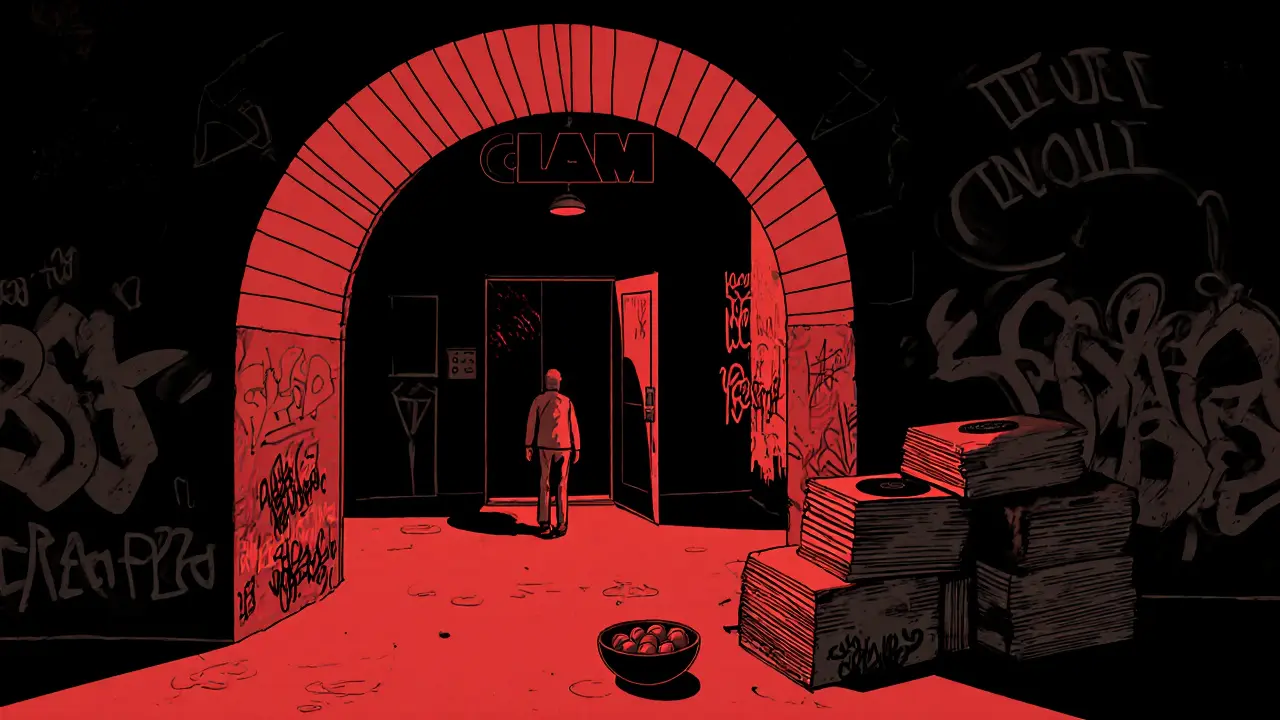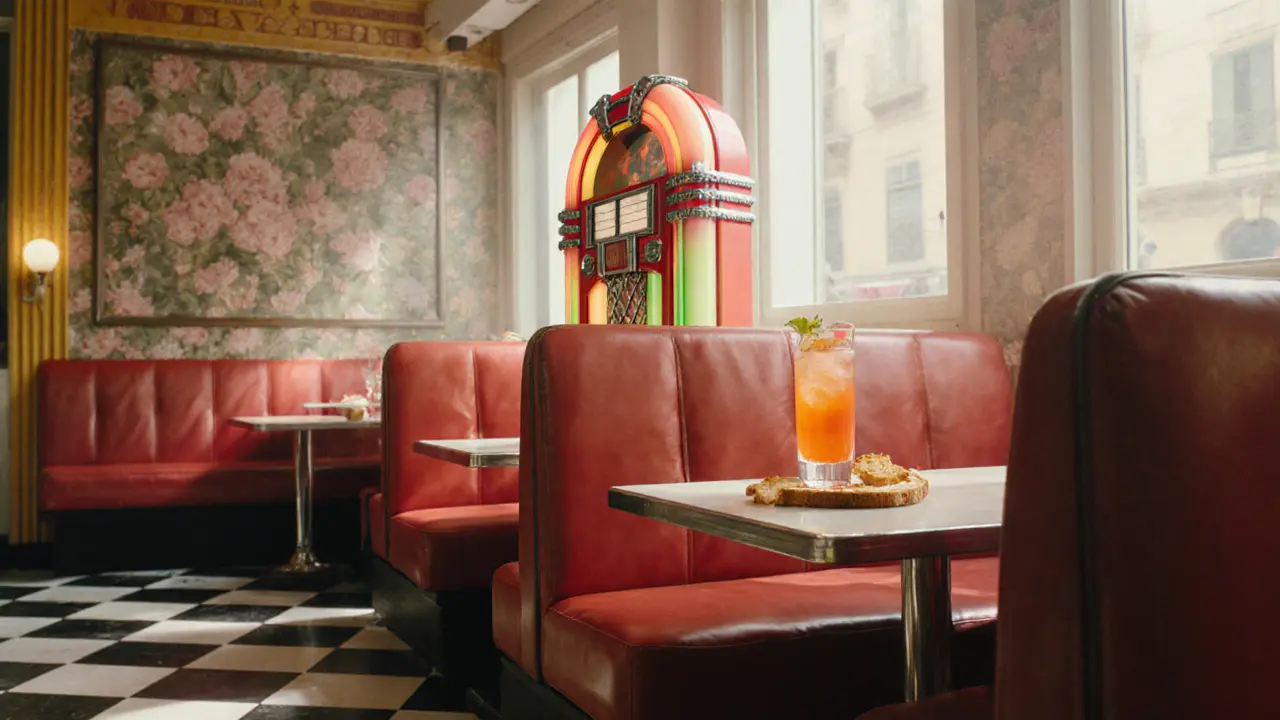Most people think Milan is all about fashion shows, designer boutiques, and quiet espresso bars. But when the sun goes down, the city transforms. The real Milan doesn’t wear a suit-it wears leather, neon, and a smirk. If you’ve only seen Milan by day, you haven’t seen it at all.
Where the Locals Go After Midnight
Forget the tourist traps near Duomo. The real nightlife in Milan starts in the Navigli district, where canals reflect the glow of lanterns and bartenders know your name by the third drink. This isn’t just a bar crawl-it’s a cultural ritual. Locals gather at Bar Basso, the birthplace of the Negroni Sbagliato. Order it exactly how they do: Prosecco instead of gin, a splash of Campari, and a twist of orange. No one asks for a menu. You just nod, and it appears.
Walk ten minutes down the canal and you’ll hit La Bicocca, a speakeasy-style lounge hidden behind a fridge door in a converted warehouse. No sign. No website. Just a password you get from your host. Inside, jazz hums low, cocktails are hand-chipped with ice from a single block, and the crowd? Designers, musicians, and ex-lawyers who traded suits for velvet.
The Underground Clubs That Don’t Exist on Google Maps
Some clubs in Milan don’t open until 2 a.m. and close before dawn. They’re not listed on TripAdvisor. You find them by word of mouth, or by following the bassline bleeding through alley walls.
Clam, tucked under a railway arch in the Porta Genova neighborhood, is one of those places. The door is unmarked. The lighting is red. The music? Deep house mixed with Italian disco samples from the ’80s. No VIP section. No cover charge before midnight. Just a small table with a bowl of olives and a guy who nods when you walk in. It’s not about being seen. It’s about being felt.
Then there’s Teatro del Silenzio, a former theater turned experimental club. DJs here don’t play tracks-they build soundscapes. One night, it’s ambient noise mixed with vinyl crackles from a 1972 Milan radio broadcast. The next, it’s live cello and modular synths. You don’t dance here. You float.

Bars That Double as Art Galleries
Milan doesn’t separate nightlife from culture. It fuses them.
Bar Luce, designed by Wes Anderson inside the Fondazione Prada, looks like a 1950s Milanese cafeteria. Red vinyl booths, checkered floors, a jukebox playing Italian pop from 1968. You can order an Aperol Spritz and sit in a scene straight out of a movie. But here’s the catch: it’s open only until 11 p.m. So if you want to linger, you come early, order two, and watch the city wake up around you.
At Il Gatto Nero, the walls change every month. One week it’s graffiti by street artists from Brescia. The next, it’s Polaroids of Milanese club kids from the ’90s. The bartender, Marco, used to run a punk zine. He’ll hand you a free shot if you tell him your favorite Milan band from the 1980s. Most people say “Litfiba.” He smiles. Then he pours you a second.
What to Wear (And What Not To)
Milan doesn’t care if you’re rich. It cares if you care.
At Clam or Teatro del Silenzio, you’ll see people in ripped jeans, leather jackets, and combat boots. No suits. No logos. No designer bags. If you show up in a blazer and loafers, you’ll stand out-not in a good way.
At Bar Basso or Bar Luce, smart casual works. Dark jeans, a button-down, no sneakers. But don’t overdo it. The goal isn’t to look rich. It’s to look like you belong.
And skip the heels. The streets are cobblestone. The floors are sticky. The walk from one spot to the next is longer than you think.

When to Go and How to Move
Midweek is better than Friday. Fridays are for tourists. Wednesdays and Thursdays? That’s when the real crowd shows up-locals who work in fashion, art, or tech, and who know exactly where to be.
Start at 9 p.m. with an aperitivo. The classic Milanese ritual: €10-15 gets you a drink and a buffet of mini sandwiches, crostini, and fried polenta. Eat slow. Talk loud. Then move.
Don’t take a taxi. Walk. The city is small. The best moments happen between places. You’ll stumble on a pop-up jazz set in a courtyard. Or a guy playing vinyl on a portable speaker outside a closed bakery. That’s the magic.
Public transport shuts down at 1:30 a.m. After that, you’re on your own. But that’s okay. The night isn’t over until you’re lost.
What You Won’t Find Here
You won’t find bottle service. You won’t find DJs spinning Top 40. You won’t find neon signs saying “PARTY!”
Milan’s nightlife isn’t loud. It’s layered. It’s quiet until it’s not. It’s subtle until it hits you like a bass drop in a dark room.
If you’re looking for clubs with velvet ropes and champagne towers, go to Ibiza. If you want to feel like you’ve discovered something no one else knows, Milan is waiting.
Is Milan nightlife safe at night?
Yes, but only if you stay aware. The main nightlife areas-Navigli, Porta Genova, and Brera-are well-lit and patrolled. Avoid walking alone through industrial zones after 3 a.m. Stick to the crowds. Most clubs have bouncers who know regulars. If you look lost, someone will ask if you need help.
Do I need to speak Italian to enjoy Milan’s nightlife?
Not at all. English is widely spoken in bars and clubs, especially in Navigli and Brera. But knowing a few phrases-"Un Aperol, per favore," or "Quanto costa?"-goes a long way. Locals appreciate the effort. And sometimes, the best conversations happen when you’re fumbling through Italian with a smile.
What’s the average cost for a night out in Milan?
You can have a full night out for €30-50. Aperitivo: €12. Two cocktails: €18. Entry to a club: €5-10 (often free before midnight). A late-night snack like panzerotti or arancini: €5. Skip the overpriced tourist bars near the cathedral. Stick to the side streets.
Are there any age restrictions in Milan clubs?
Most clubs require ID and have a minimum age of 18. Some experimental venues like Teatro del Silenzio may be 21+. Always carry a passport or EU ID card. Bouncers don’t ask twice.
What’s the best time to arrive at a club in Milan?
Arrive between 1 a.m. and 2 a.m. That’s when the real energy kicks in. Clubs open at midnight, but the crowd doesn’t show until later. If you get there too early, you’ll be sitting alone. Too late, and you’ll miss the best sets. The sweet spot? When the first DJ drops the second track and the room finally moves as one.
